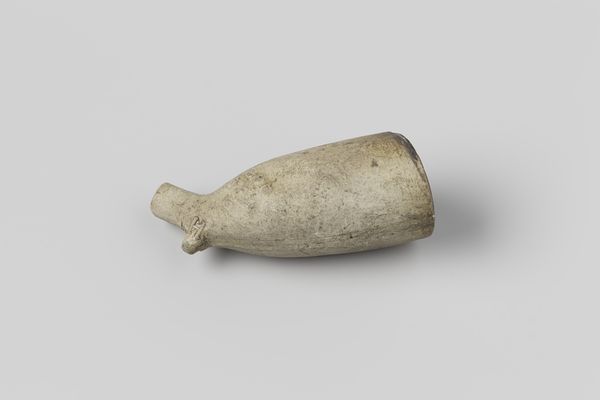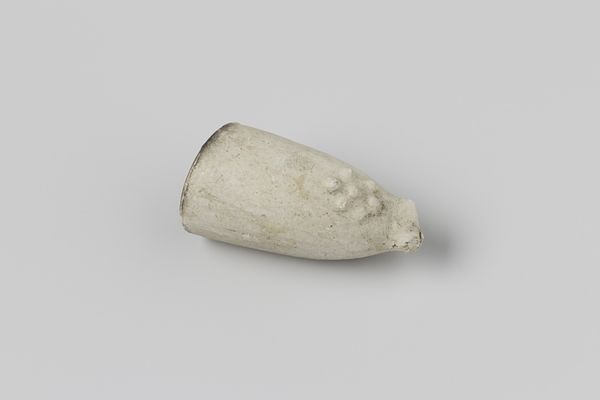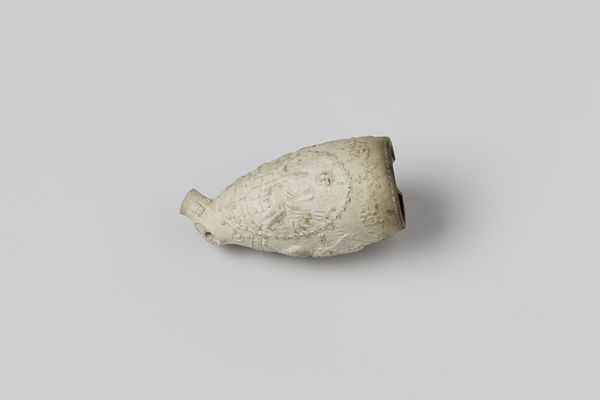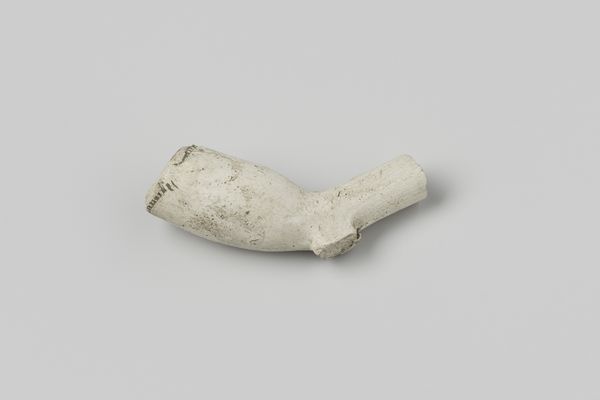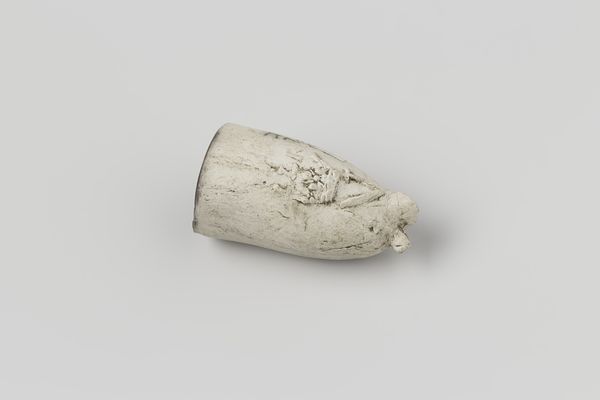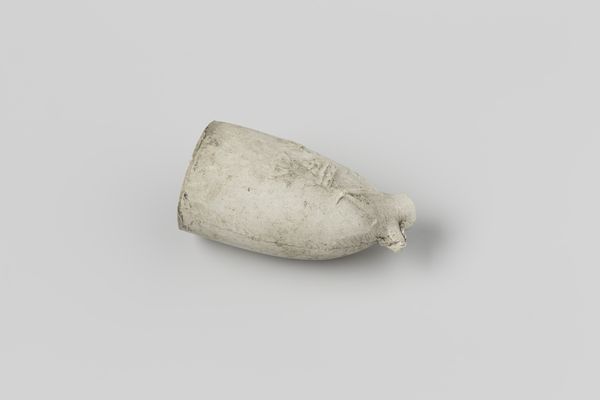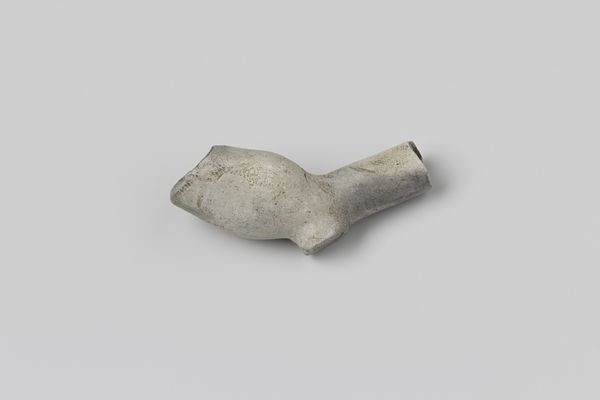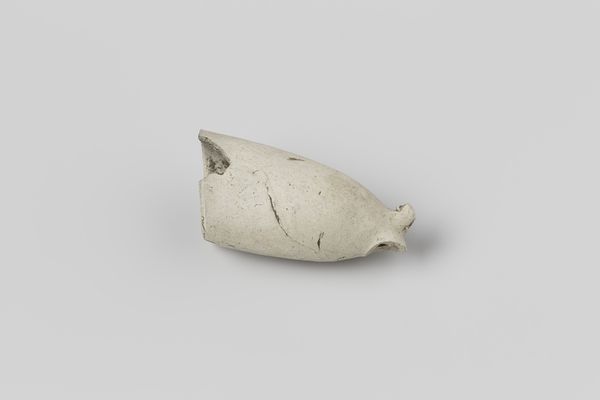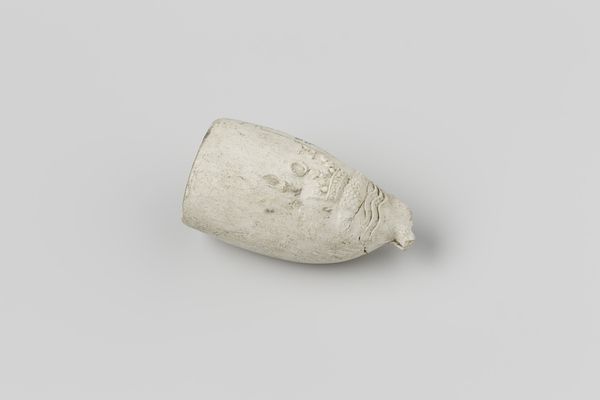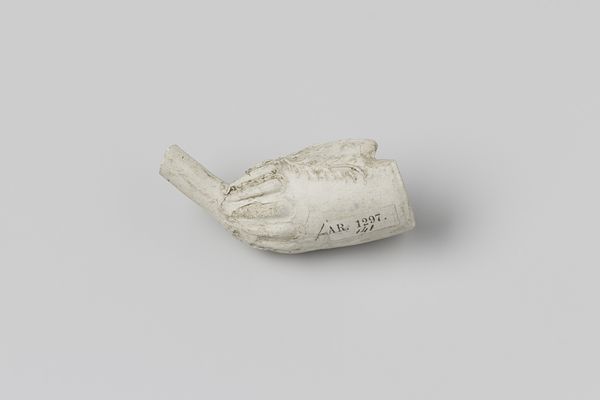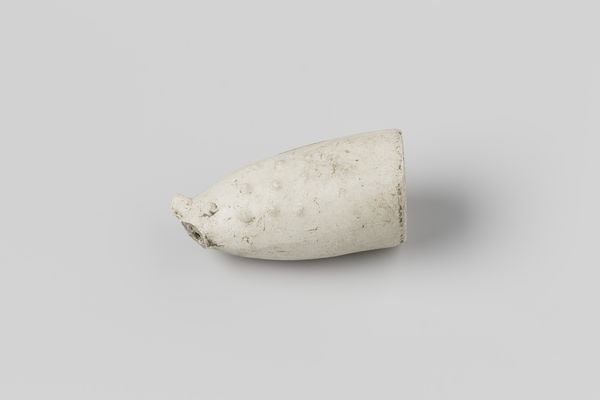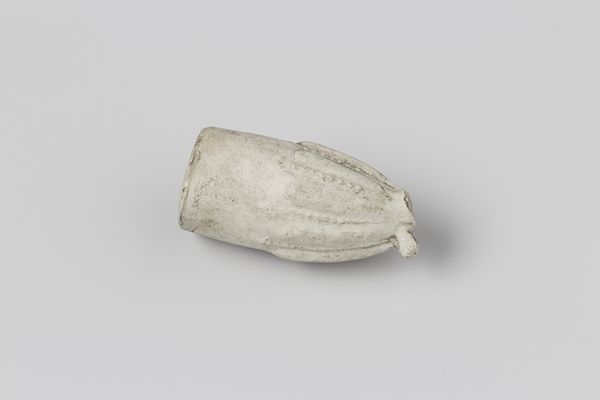
ceramic, earthenware
#
ceramic
#
earthenware
Dimensions: length 4.0 cm, width 2.0 cm, length 4.5 cm
Copyright: Rijks Museum: Open Domain
Curator: Oh, it's just a little pipe, isn’t it? An earthenware fragment, dating back to somewhere between 1720 and 1740. The artist, sadly, remains unknown. Editor: It looks ghostly. Pale and worn, a little melancholic somehow. Curator: The shape itself is so unassuming, so ordinary, but that’s part of what’s so compelling. These tobacco pipes were common during that period; people from all walks of life smoked. Editor: So this small artifact silently speaks to larger historical conditions of labor, colonialism and the commodification of pleasure… Tobacco use became inextricably linked to exploitative systems of trade. Curator: Exactly! It was about so much more than just tobacco. And maybe this one was owned by someone who never thought about where their pleasures came from. It is kind of interesting to hold this in your mind, because so many people are blissfully ignorant still about those chains today. Editor: Precisely. The artifact might even have been molded, at least in part, by child labor. It raises serious ethical questions to reflect on this object from our time. I notice little sculpted details. Could they tell us something? Curator: Maybe! A tiny rose, a crown. Little markers of identity. You see this often in pipes. Personal touches, aspirations worked into the clay. Even though it's anonymous in its production, perhaps the end user did make it theirs somehow. A symbol, even a reminder. I think objects absorb all these kinds of details and secrets. It's something lovely to hold, this piece, for what it saw and absorbed. It gives me pause. Editor: I agree. It's a powerful reminder of the interconnectedness of things, how everyday objects are steeped in history and struggle. Curator: A humble thing that contains multitudes! Editor: Indeed. Thank you.
Comments
No comments
Be the first to comment and join the conversation on the ultimate creative platform.
